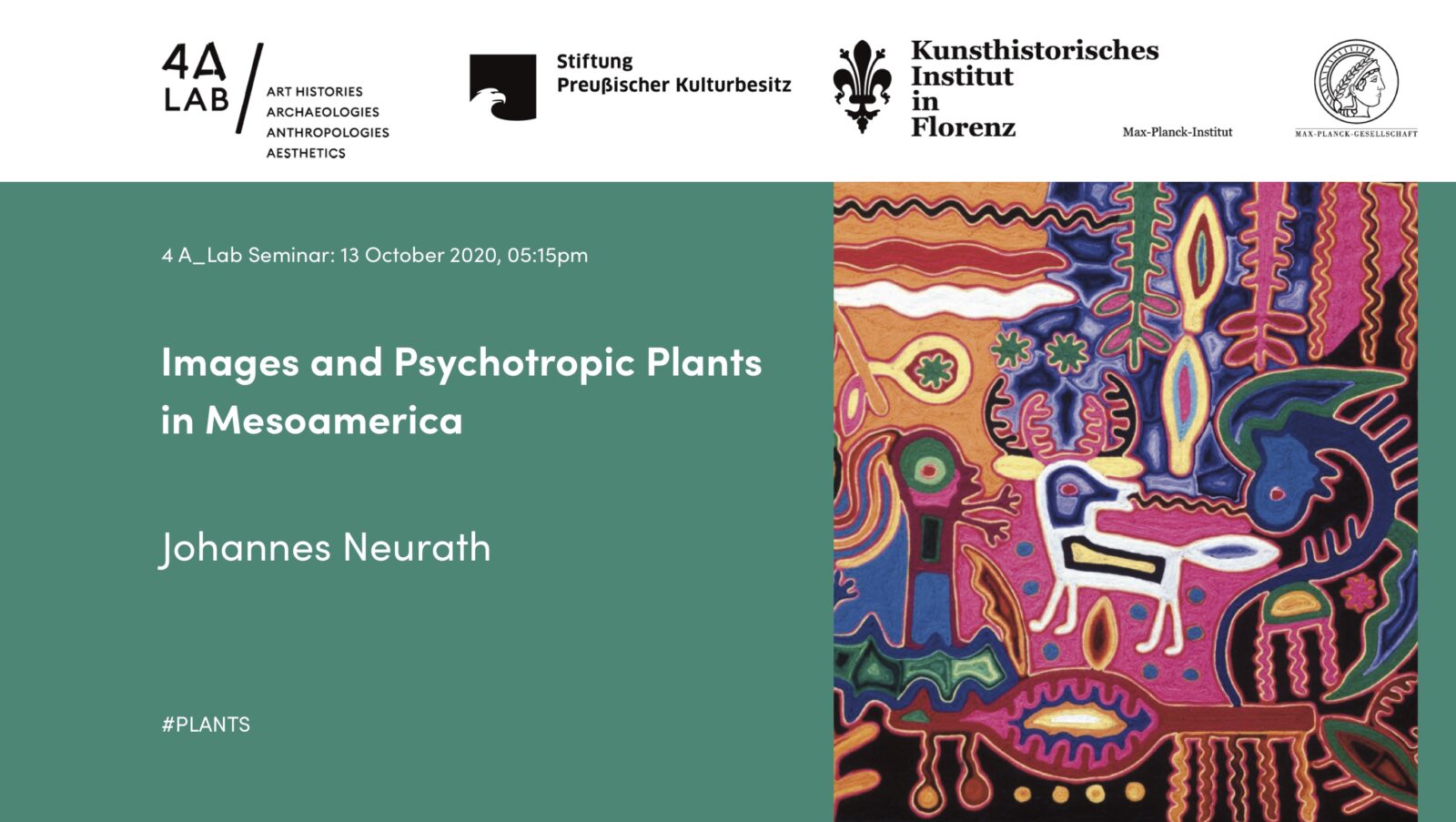Media Library, Objects, Plants, Practices
VIDEO: Images and Psychotropic Plants in Mesoamerica, by Johannes Neurath
The consumption of hallucinogens in ritual settings was—and to some extent still is—a common practice in Mesoamerica; yet, the artistic and aesthetic implications of this phenomenon have received little attention. In this talk, Johannes Neurath presents his research on the art inspired by psychotropic experiences in the context of Mesoamerican shamanic rituals. The talk took place on October 13, 2020 as part of the 4A_Lab online seminar series.
02.11.2020

The hallucinogenic fungus Psylocibe mexicana had a long tradition of psychotropic use among the Pre-Columbian societies of Mesoamerica well before the Hippie movement brought it into vogue in the 1960s. In ancient Mesoamerican cultures “magic mushrooms,” as they are commonly known today, were often consumed in ritual settings for their powerful stimulant effects, as initiatory visions were believed to bring on stronger ecstatic experiences. Like peyote (Lophophora williamsii)—a species of hallucinogenic cactus found in the Central American desert—these fungi are still collected and consumed by some Indigenous peoples across the region, including the Wixarika. Fungi and other psychotropic plants are also a recurrent motif in Pre-Columbian art, ranging from mushroom stones and pictograms to representations of Indigenous deities associated with psychoactive plants.
In this talk, Johannes Neurath traces the socio-cultural relevance of psychotropic plants in Mesoamerica from Pre-Columbian times to the present day, highlighting some often-neglected aspects of their use and representation in local visual culture. His focus is on how hallucinogenic experiences influenced (or seem to have influenced) the style and figurations of Pre-Columbian art—a hitherto little explored area of research. Contemporary artworks from Indigenous artists from West Mexico are also being considered and discussed.
The talk “Images and Psychotropic Plants in Mesoamerica” took place on October 13, 2020 within the framework of the 4A_Lab online seminar series.
